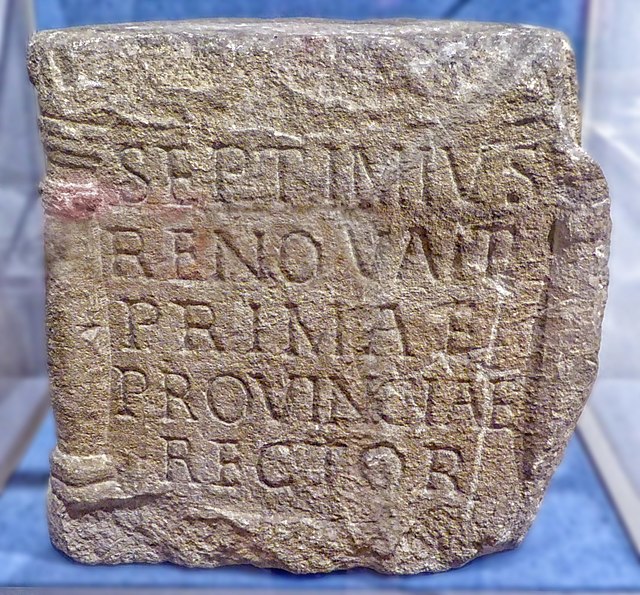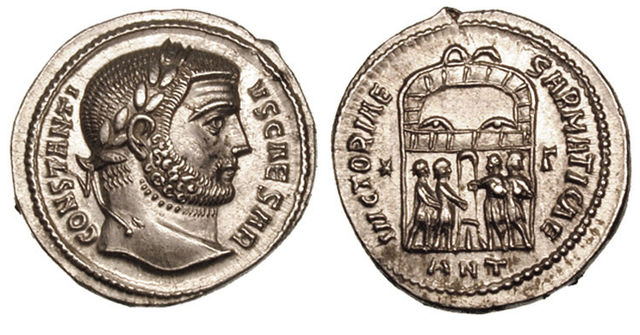Britannia Prima or Britannia I was one of the provinces of the Diocese of "the Britains" created during the Diocletian Reforms at the end of the 3rd century. It was probably created after the defeat of the usurper Allectus by Constantius Chlorus in AD 296 and was mentioned in the c. 312 Verona List of the Roman provinces. Its position and capital remain uncertain, although it was probably located closer to Rome than Britannia II. At present, most scholars place Britannia I in Wales, Cornwall, and the lands connecting them. On the basis of a recovered inscription, its capital is now usually placed at Corinium of the Dobunni (Cirencester) but some emendations of the list of bishops attending the 315 Council of Arles would place a provincial capital in Isca (Caerleon) or Deva (Chester), which were known legionary bases.
Roman Britain around AD 410, without speculative provincial borders.
The traditional arrangement of the late Roman provinces after Camden, placing Prima along England's southern coast. On the basis of modern archaeology, the province at least reached as far north as Corinium.
Inscription of Lucius Septimius
Flavius Valerius Constantius, also called Constantius I, was a Roman emperor from 305 to 306. He was one of the four original members of the Tetrarchy established by Diocletian, first serving as caesar from 293 to 305 and then ruling as augustus until his death. Constantius was also father of Constantine the Great, the first Christian emperor of Rome. The nickname "Chlorus" was first popularized by Byzantine-era historians and not used during the emperor's lifetime.
Bust at Ny Carlsberg Glyptotek
This coin shows the Augusta Flavia Maximiana Theodora, Constantius' second wife, with the goddess Pietas on the reverse.
On the reverse of this argenteus struck in Antioch under Constantius Chlorus, the tetrarchs are sacrificing to celebrate a victory against the Sarmatians.
Portrait head of Tetrarch, most likely Constantius Chlorus.







